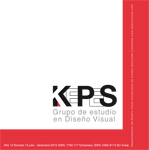Authors
Abstract
This article, derived from the research project “Diagnosis of training needs for ecotourism and natural resources in the province of Tungurahua”, addresses the creation process of Tisaleo, a small canton of Ecuador’s Andean highlands destination brand. The study contrasts two perspectives on the touristic image and their effect as a claim from a qualitative approach. On one hand, a group of local graphic designers proposed a series of corporate identity manuals which address the characteristics they have perceived as significant in the canton. On the other hand, an interdisciplinary and international researchers team prepared a report on the potential attractive areas for a segment of travelers interested in tourism based on “cultural landscape”. The final dissertation concludes that the image of a touristic destination, besides representing the characteristics proper of the physical location, should take into consideration that the visitors’ gaze can associate in their imaginary some evocative element of what the visitor’s profile who wants to be attracted expects to find.
Keywords
References
Ayora, S. I. (2003). Medicina, nostalgia y la mirada turística en Chiapas. En C. Bueno Castellanos & E. Aguilar Criado (Coords.), Expresiones locales de la globalización: México y España (pp. 355-380). México, DF: Centro de Investigaciones y Estudios Superiores en Antropología Social - Universidad Iberoamericana.
Carballo, R., Moreno, S., León, C. J., & Ritchie, B. (2015). La creación y promoción de experiencias en un destino turístico. Un análisis de la investigación y necesidades de actuación. Cuadernos de Turismo, 35, 71-94.
Di Marino, E. (2008). The Strategic Dimension of Destination Image. An Analysis of the French Riviera Image from the Italian Tourists Perceptions. (Tesis doctoral). Università degli Studi di Napoli “Federico II”, Nápoles, Italia.
Ferreira, S. D. (2011). Destination image: Origins, Developments and Implications. Revista de Turismo y Patrimonio Cultural, 9(2), 305-315.
Frías, D. M., Rodríguez, M. A., Castañeda, J. A., Sabiote, C. M., & Buhalis, D. (2012). The Formation of a Tourist Destination’s Image via Information Sources: the Moderating Effect of Culture. International Journal of Tourism Research, 14, 437-450.
Gómez, A. (2015). Modelo de diseño para la valoración y apropiación social del Patrimonio en el Paisaje Cultural Cafetero colombiano. Revista Kepes, 11, 117-138.
Guzmán, C., Garduño, M., & Zizumbo, L. (2009). Reflexión crítica sobre el consumo turístico. Estudios y Perspectivas en Turismo, 18(6), 691-706. Recuperado de http://www.redalyc.org/pdf/1807/180713900004.pdf
Navas, V. H. (2000). Tisaleo: cultura y tradición. Consejo de desarrollo de las nacionalidades y pueblos del Ecuador. Quito, Ecuador.
Organización Mundial del Turismo & Programa de las Naciones Unidas para el Medio Ambiente. (2002). Cumbre Mundial del Ecoturismo: Informe Final. Madrid:
Organización Mundial del Turismo. Recuperado de http://www.unep.fr/shared/publications/pdf/WEBx0079xPA-EcotourismSummitES.pdf
Reino, P. A. (2002). Tisaleo indígena en la colonia. Ilustre Municipio del Cantón Tisaleo-Tungurahua, Ambato, Ecuador.
Secretaría Nacional de Planificación y Desarrollo (SENPLADES). (s.f.). Plan Nacional del Buen Vivir 2013-2017. Quito, Ecuador. Recuperado de http://documentos.senplades.gob.ec/Plan%20Nacional%20Buen%20Vivir%202013-2017.pdf
UNESCO. (1972). Convención sobre la Protección del Patrimonio Mundial Cultural y Natural. París.
Urry, J., & Larsen, J. (2011). The Tourist Gaze 3.0. London: Sage Publications.
Zamudio, L. S. (2013) Arquitectura y turismo. La arquitectura como reclamo turístico. Urbano, 28, 58-67. Recuperado de http://www.redalyc.org/articulo. oa?id=19836965009

 pdf (Español (España))
pdf (Español (España))
 FLIP
FLIP





















